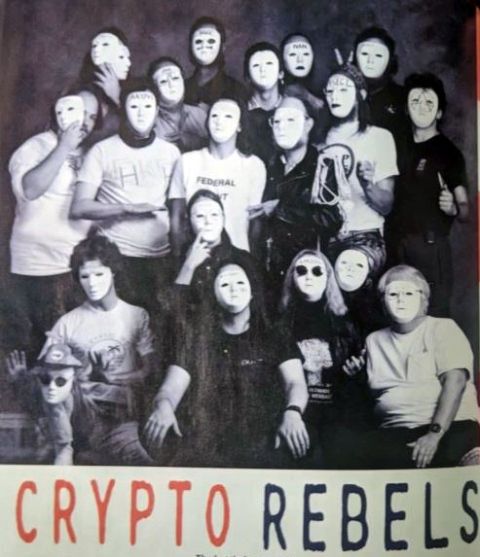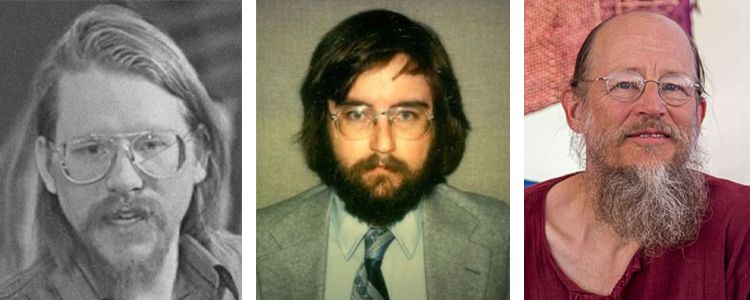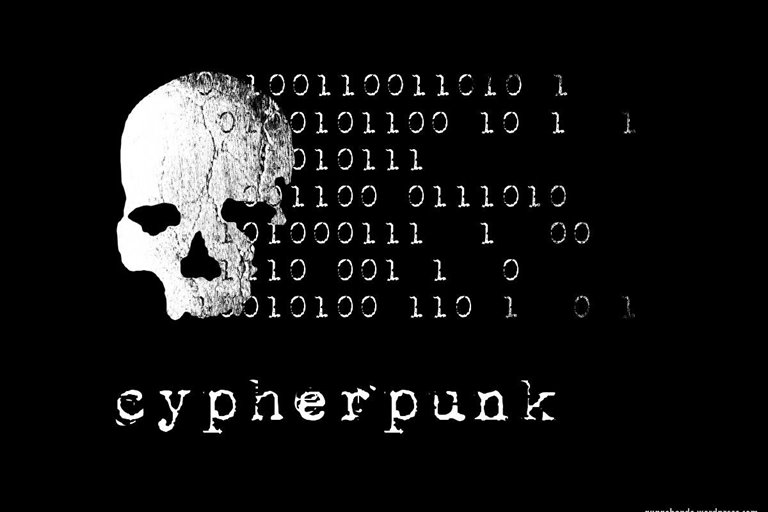Who Are Cyberpunks And What Is Their Purpose?
When We Hear The Name Cipher Punks, We May Subconsciously Imagine A Group Of People Who Have Come From Some Time In The Future. This Assumption May Be Somewhat Correct.
Cyberpunks is a free and active movement launched in the late twentieth century and 1992 with email lists in informal groups. The campaign intended to achieve greater security and privacy through cryptography and held monthly meetings to discuss and resolve coding and programming issues.

With the advent of digital currencies and blockchains and their growing popularity among people, more and more people are calling themselves cyberpunks. Today, this has become one of the concerns of governments and law enforcement agencies in countries.
The emergence of cipher punks
The exact date for creating the Cypherpunk movement cannot be determined, But its origins can be traced back to the mid-1970s. Before this date, cryptography was a technical issue, and only military forces and intelligence agencies were allowed to use it, and it was primarily classified and classified.
Finally, two people in the United States, Martin Hellman and Whitfield Diffie, introduced non-confidential encryption to the public, and the government released the Standard Data Encryption Algorithm (DES).
Confidential encryption was one of the most powerful techniques for sharing a private key without knowing the other party. In this type of encryption, a public key is created using a private key, and the security of the private key is maintained.
In 1992, three people, Eric Hughes, John Gilmour, and Timothy C. May, decided to invite a group of (20) friends to a family meeting to discuss the world of programming and cryptography…
This meeting can be considered as the beginning of the emergence of cyberpunks throughout history. After that, they decided to hold a similar meeting every month to achieve greater security and privacy.

Right to left: John Gilmour and Timothy C. May and Eric Hughes
Eric Hughes, a mathematician at the University of California, Berkeley, and Timothy C. May, a mechanical engineer at Intel and Gilmore, also worked as a computer scientist at Sun Microsystems (owned by Oracle). The three initially discussed cryptography and privacy issues.
The cypherpunk e-mail list initially included twenty people, and in two years, that number rose to seven hundred, and three years later to more than two thousand.
Almost at the same time as the meeting, Hughes, May, and Gilmore launched a series of projects that attracted the attention of many like-minded people. Hughes created a cypherpunk email list and found a popular service called Anonymous remailer to resend incoming emails anonymously. It is also a statement titled manifesto anarchist CRYPTOCard (Crypto Anarchist Manifesto) published.
As the actions of these people in cyberspace accelerated, a person named Jude Millon chose the word cypherpunk for this movement. Jude was a self-taught author and human rights activist and programmer who coined the term Cypher Punk with the prefix Cipher (> Cypher), meaning encrypted, and used the science fiction genre Cyberpunk for the movement.

Jude Millon
A year later, Hughes published the Cypherpunk Manifesto, which is considered the starting point for the Cypherpunk movement.
Objectives of the Cypriot Punk Movement
The Cypriot Punk statement explicitly addresses the issue of privacy:
Privacy in today’s world and the age of technology and electronics is a free society’s essential and undeniable needs. Privacy is not something one wants the whole world to know about, and protecting it does not mean hiding it. Hiding an issue means that no one knows about it. Privacy is the power of choice for individuals to present themselves to the world as they wish.
The main goal of the Cypherpunk movement is to give individuals the power to choose to keep their personal information confidential or disclosed without coercion by governments or regulators.
In addition, many cyberpunks believe that governments monitor many of their citizens by collecting and retaining information. The revelations of Edward Snowden, a former CIA employee, and former National Security Agency adviser, also confirm this.
The belief of cyberpunks played an essential role in the emergence of bitcoin.
Cyberpunks welcome any absence of governments and central banks in financial transactions. They do not expect governments and regulators to provide security to the people by default. They believe that such institutions run by a central government cannot prevent fraud, theft, and money laundering.
Cyberpunk activities
cyberpunks created cryptographic functions To support their movement:
Cypriots have committed themselves to create an anonymous system and protecting our privacy by using encryption, sending anonymous emails, digital signatures, and electronic money.
Here are some examples of cyberpunk activities to protect your privacy:
- Adam Beck was one of those cyberpunks who developed an anonymous transaction system called Hashcash in 1997 to protect individuals’ privacy and limit spam emails and cyberattacks.
- He was one of these people who, in 1998 (1998), presented a proposal for the second type of money called B-money. B-money was anonymous and distributed electronic money that could be considered a model for developing Bitcoin. His role in the field of cryptocurrencies was so influential that today, in his honor, the tiniest microcosm of ether cryptocurrencies has been named Wei.
- In 2004, Hall Finney created the first version of the Reusable Proof of Work system using the Adam Beck anonymous transaction system, later used to create digital currencies. . Bitcoin was the first mechanism to become part of the system, and Hall Finney was the first person to own Bitcoin in 2009.
The code and scripts written by each cyberpunk are available for free on the Internet so that other cyberpunks can edit or improve them.
Prominent cipher punks
As stated in the Cypriot Punk statement, it is preferable that the character and identity of each Cypriot punk are not so prominent and that the movement retains its secret identity. However, some members of the movement have made headlines because of the meaningful actions they have taken. Some of the famous 21st-century cyberpunks are:

-
Julian Assange (Julian Assange): Assange, the WikiLeaks and Sayfrpank movement founder, is a celebrity. WikiLeaks was launched in 2006 and rose to fame in 2010, But Assange says he has joined the trend since 1993 or 1994.
-
Jacob Appelbaum (Jacob Appelbaum): Applebaum computer programming and one of the original members of The Tor Project, used to search anonymously on the Internet. Applebum represented WikiLeaks in 2010 and has been wanted by US security forces since that year. Applebaum played an essential role in selecting Edward Snowden’s articles for publication.
-
Bram Cohen (Bram Cohen): Cohen, founder of file-sharing platform BitTorrent, is. In 2017 (2017), he launched the Chia digital currency network.
-
Satoshi Nakamoto (Satoshi Nakamoto): Nakamoto pseudonym for a person or persons unknown Bitcoin producer. Nakamoto designed Bitcoin WhitePaper and China’s first blockchain database.
-
Edward Snowden (Edward Snowden): The name of Snowden as Sayfrpank is not known. His measures increased the credibility of movement and freedom from government control is Sayfrpank.
The future of cyberpunks
With the advancement of technology and the emergence of new and essential issues in data and privacy, the presence and activity of movements such as cyberpunks is a natural need for society. It can say that cyberpunks were the masterminds of digital currencies and blockchains, and the epidemic of cryptocurrencies is a testament to the success of their movement.











